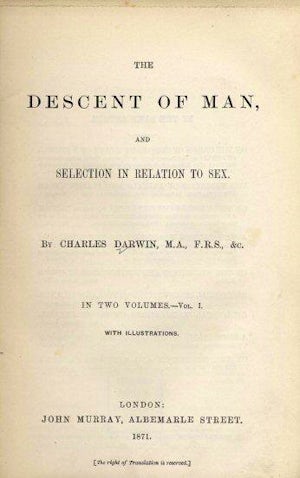1918. The book Le haras humain (or The Human Stud-Farm) is published. It is the second major work of the French military doctor and psychopathologist Charles Binet-Sanglé. The book drew on many influences at the time, including neo-Lamarckism, anthropology, and genetics. In particular it embraces eugenic theories set forth by Paul Robin, which postulated that both medicine and science should look towards improving the quality of people born, rather than focusing on increasing the number of people born. (Hello, 2009-2010). (Paul Robin was a French scientist and professor, and an important figure in the Neo-Malthusian movement, as well as the founder of "la Ligue de la Régénération humaine" [The League of Human Rejuvenation] in 1896. Binet-Sanglé was himself linked to the League of Human Rejuvenation). Le haras humain was translated in a few other languages, and was notably influential in Central Europe (Promitzer, 2007).
Binet-Sanglé was a celebrated military doctor, who also taught at the School of Psychology in Paris in 1903. He was the recipient of awards such as knighthood from the Legion of Honour in France. Binet-Sanglé contributed a large number of articles to medicine, anthropology, and psychology, which helped bridge different subjects of thinking of the time - notably neo-Lamarckianism and criminal anthropology (Hello, 2009-2010). His book, La Folie de Jésus (The Madness of Jesus), published in four parts between 1908 and 1915, was a diagnosis of Jesus and his hereditary as those of someone mentally ill (Hello, 2009-2010). The book was incredibly controversial. In addition to anti-clerical viewpoints, Binet-Sanglé was interested in madness, hygiene, and criminal anthropology, whose influence also appeared in his works (Hello, 2009-2010). Binet-Sanglé was also a supporter of birth control and abortion (Hello, 2009-2010).
His other most influential work, Le Haras Humain suggested that euthanasia was necessary in some cases, and that a eugenic institute must be founded to encourage education of the improvement for the human race (Promitzer, 2007). The book relied heavily upon theories set forth by Paul Robin. In particular, the book focused on hygiene of those raised in such an institute in four areas: the raising of children, diet, sexual hygiene, and clothing. It was heavily censored in France (Hello, 2009-2010). The book was translated some time later in Bulgaria, and was used to help popularize racial hygiene in that country (Promitzer, 2007).
The French version of the book is available online here.
-Colette Leung
Hello, E. (2009-2010). Charles Binet-Sanglé: 1868-1941, Médicin militaire et neomalthusien francais. (Master's thesis). Universités de Bordeaux 1 et de Bordeaux 3, Bordeaux, France. Retrieved from: http://www.episteme.u-bordeaux.fr/docs/recherche/memoires/memoire_m2_eric_hello.pdf
Promitzer, C. (2007). Taking Care of the National Body: Eugenic Visions in Interwar Bulgaria, 1905-1940. In M. Turda, & P. Weindling, "Blood and Homeland": Eugenics and Racial Nationalism in Central and Southeast Europe, 1900-1940. (223-252). Budapest: Central European University Press.
 1869:
Galton publishes Hereditary Genius
1869:
Galton publishes Hereditary Genius
 1871:
Charles Darwin publishes The Descent of Man
1871:
Charles Darwin publishes The Descent of Man